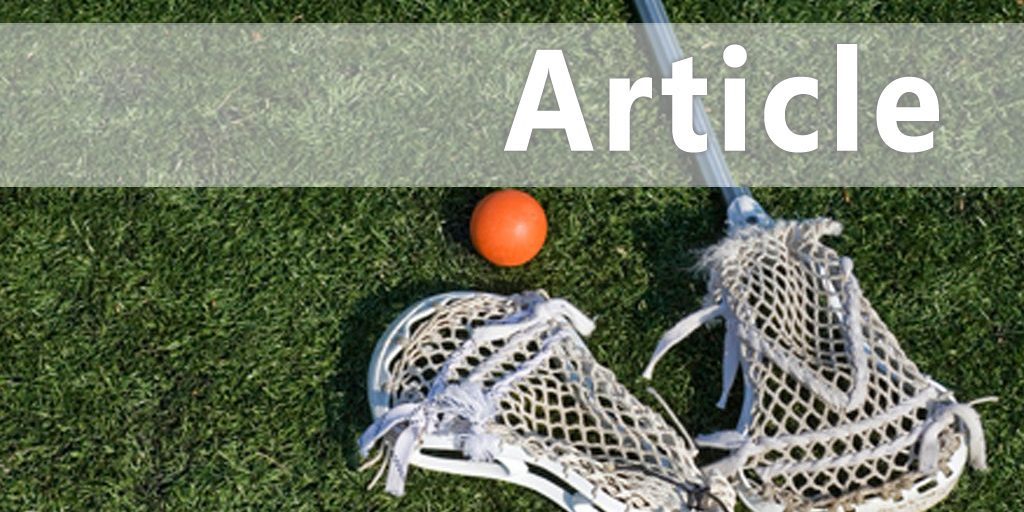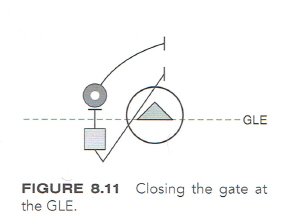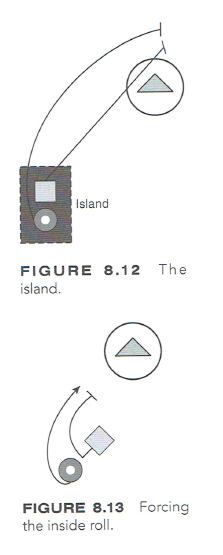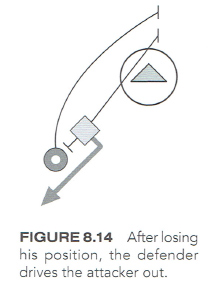|
One-On-One Defensive Drill By: Don Zimmerman and Peter England Originally Published in: Men's Lacrosse Human Kinetics
Setup Execution Coaching Points A dodging ball carrier in the attack zone has two missions. First, he wants to beat you to the GLE so that you can't muscle him away from the goal cage. If successful, the ball carrier then wants to post you on the "island" (described later in the chapter), where he can go in either direction and where you will need defensive support to counter his moves. You, on the other hand, want to beat The GLE on the wings of the goal line, as shown in figure 8.11, can be thought of as a "swinging gate." When you are playing the ball carrier in the attack zone and he is attacking the goal, your objective is to first beat the ball carrier to the GLE and then meet the ball carrier with body contact. Your job is to get to this imaginary gate first and then shut or close the gate. You want to beat him to this spot (GLE), meet him at this spot, and make physical contact. To properly close the gate, you must have your hips facing the end line or the corner of the field, and you must play the ball carrier's body, not his stick. Don't chase the head of the stick. You need to get up on the ball carrier, turn him, and drive him toward the end line or the corner of the field (meeting force with force). Sometimes a ball carrier will use a "rocker step" dodge in which he fakes an inside roll and comes back for his strong-side shot. If he is going to beat you, you should make sure that he beats you with an inside roll dodge and not a topside move. If you are a step behind your attacker at the GLE and you can't get in better position to take away his topside shot, you should drive him up to the midfield corner (see figure 8.14). When you're behind the attacker, the best strategy is to stay there and use proper driving technique to keep pushing him out. Use the proper hold technique, keep your feet moving, and drive the attacker up and out toward the midfield line. If you're trailing the attacker at the GLE, you must avoid trying to suddenly get into the ideal topside position by overcompensating and over-committing your body positioning. If you overcompensate, the attacker will roll dodge you for a high-quality shot. Whether you're a step behind the attacker at the GLE or you're in good solid position (and you close the gate), you need to keep the ball carrier going away from the goal. In both instances, you're driving your man away from the goal, just in different directions.
|



 the ball carrier to the GLE and take away any close-in shots. If you don't beat the ball carrier to the GLE and he posts you on the island, you should then force him to perform an inside roll.
the ball carrier to the GLE and take away any close-in shots. If you don't beat the ball carrier to the GLE and he posts you on the island, you should then force him to perform an inside roll.




